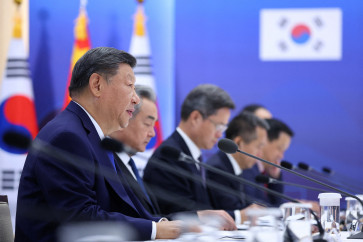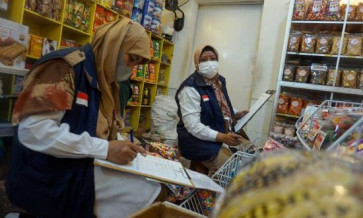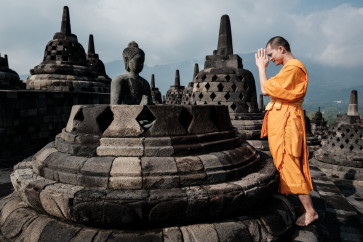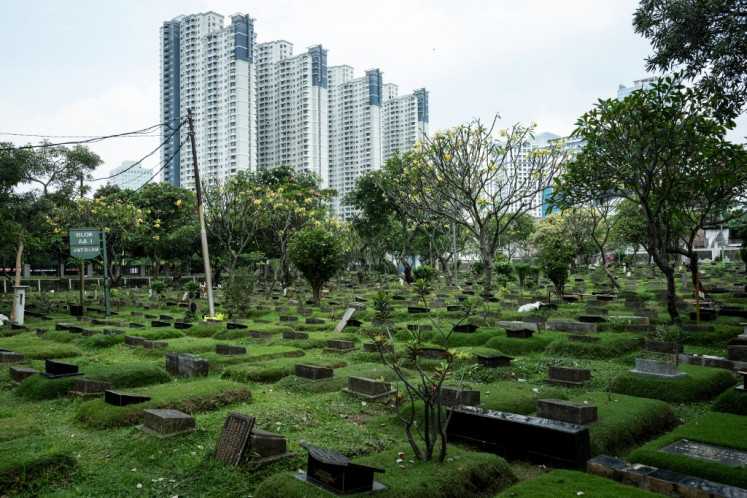Popular Reads
Top Results
Can't find what you're looking for?
View all search resultsPopular Reads
Top Results
Can't find what you're looking for?
View all search resultsShoot your lunch, eat your dinner: Creating a story on a plate
Delish dish : Good food photography can make people drool just by looking at the image
Change text size
Gift Premium Articles
to Anyone
Delish dish : Good food photography can make people drool just by looking at the image.
All food has its own story and so does capturing it in images
Food stylist Vania Samperuru and photographer Fellexandro Ruby have their own recipes for making great food photography. In a food exhibition, the duo shared their tips for creating a “story on a plate”.
For food lovers, bloggers and aspiring food photographers, their message is clear: it’s never too late as there’s always room to learn. They believe capturing memorable photos can be learned even without a background in design or photography, different from other professions, which mostly require talent. This means anyone can take up this skill whether you are a stay-at-home mother or a banker.
Once an excavator operator, Ruby has always known that his true passion is anchored in his love of food and he expresses this love by capturing the food in great and tantalizing images that are a feast for the eyes.
“I did heavy duty construction work for almost 6 years — which had nothing to do with either art or design. Therefore photography is a learned skill to be mastered no matter who you are,” he explained.
Ruby argues that a person doesn’t have to fuss at technicalities so long as they familiarize themselves with the basics.
“When we talk too much about ISO, white balance, aperture — it’s an endless ordeal because I like to focus on giving soul to my photos,” he said.
But what are good images for Ruby?
“If people drool at the melting details of a chocolate brownie, even if they haven’t tasted it yet, then you know it’s a good one.”

Photographer Fellexandro Ruby

Food stylist Vania Samperuru
Meanwhile, Vania believes that good food photography is not always about the food. She calls on food photographers to focus on the food and also to play around with objects surrounding the dish. Therefore, it is important for food photographers to understand table-setting etiquettes.
“Make sure that it all makes sense. When photographing a pudding, isn’t it quite absurd to place a fork alongside it?” she said.
“Intricate details like plate sizes are the keys to creating balance.”
She then reminds us to pick a theme or concept when styling a dish, because we are attempting to create a narrative through our photos.
Here are some recipes given by Ruby and Vania to create awesome food photography:
#1 Where are the windows?
Food bloggers should take advantage of this tip, by relentlessly finding a spot with as much natural light as possible. “The first thing we should look for upon entering a restaurant is the window. Sunlight as a God-given source should be our best friend. I mean, you wouldn’t want to bring around those hefty studio lights everywhere, right?” he said. Therefore his tagline: “shoot your lunch, eat your dinner”, is a great concept to adopt because most of the time, dinner lighting is not an adequate support for food photographers unless they are appointed to work with it.
2# Lighting, lighting, lighting
For Ruby, where our light comes from does wonders in letting every color and detail of our food jump off the page. “Try and look at photos to see where the shadows fall…backlight could actually be a good thing,” he explained.
#3 Underdress
Indeed, it is sometimes very tempting to amplify the brightness in our camera when taking food photos because after all, isn’t it all about the details? However, certain hues like orange and yellow will eventually lose their vividness. Therefore, it’s alright to generate some mood into our photos that can be edited later on according to our preferences. Any color if imposed will appear too white. It’s better to go under than over,” he said.
#4 The lines of love, or Garis-Garis Cinta
Nowadays, our cameras usually come with a display option where there are gridlines appearing as our guide. With the lines, photographers can place their objects as the center of the attention. “This is my way of simplifying a photographer’s objective of creating points of interest as part of their storytelling. This also allows our eyes to wander through the photo and the various objects that are placed according to the grid lines. But of course, you can still be creative,” he suggests.
#5 Selfies!
Ruby encourages us to continue the selfie-taking habit as a way to experiment with different angles while shooting. “The same goes when trying to bring out our best features with selfies,” he said.
The topshot, according to him is a great starting point to capture special elements such as latte art and when we’re confident with our results, the 45-degree angle is perfect for details. “Take the burger. Would we be able to focus on the juicy meat and fresh lettuce or tomatoes through a top-shot angle? So you see, each kind of foodstuff has its own selfie moment,” he explains.
#6 If unsure, get intimate!
“Ah, this is not a relationship tip!” Ruby jokes. Instead, Ruby highlights once again that each dish has its own zest. For instance, half-eaten noodles may not look all that appetizing from a top-shot angle, but when the camera zooms in, one gets to see the gleam from the oil. “The result can leave you drooling, so to say,” he says.
#7 It’s okay to be picky
It is important to note that not all foodstuffs are appetizing when they are photographed. So, Ruby tells us to take a deep breath, because it’s perfectly alright to pick our menu with a variety of meals and dishes with many colors and textures in order to entice the readers of a food blog.
#8 Love our gear
“This is such a simple yet overlooked tip. That’s what usually happens where we have all the right tools but we don’t take the time to get to know them,” he said. “So, we have to familiarize ourselves with our cameras. First, we must clean our lenses. [And] don’t forget to focus on your object,” he says.
#9 Pay attention to color schemes
Color schemes are used to attract viewers; therefore it is important to study the color scheme chart. For example, tomato soup is best placed in a blue bowl as red and blue are complementary colors. However, white is the safest choice for beginners and one can continue by mixing and matching different textures of properties such as ceramics and bamboo. “White is our safe zone, we can just mix and match other properties and their textures to create different effects,” Vania adds.
— photos by Cemara Dinda
— Cemara Dinda is an intern at The Jakarta Post










